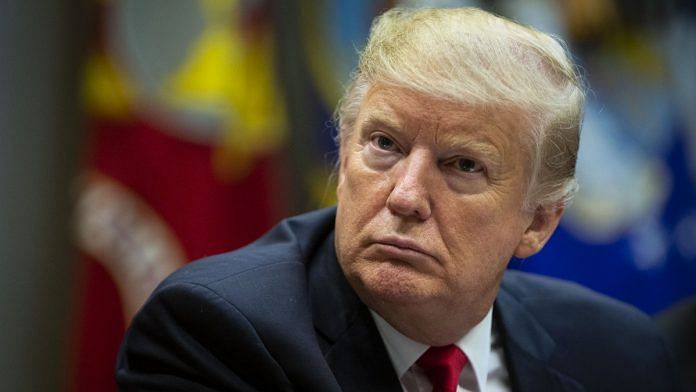The number of new international students at U.S. universities fell for the fourth academic year in a row in 2018-2019. But only by a little bit (the new-student number was 0.9% lower than the previous year’s).
These data, released today by the Institute of International Education, shed a little more light on the question whether the policies and rhetoric of President Donald Trump are endangering what has been a lifeline for many U.S. universities as well as a long-running boost to the trade balance (the money foreign students spend here counts as an export of educational services), a key source of talent and a generator of American soft power. They don’t exactly answer it, though.
The decline in new students started with the 2016-2017 academic year, which is a little hard to blame on Trump given that most students had already showed up well before he was elected. Likelier culprits would seem to be the sharp rise in the relative value of the U.S. dollar in 2015 and 2016, and the cash-strapped Saudi Arabian government’s early-2016 decision to cut back on scholarships for study abroad. The number of new Saudi students in the U.S. has continued to fall, going from 61,007 in 2015-2016 to 37,080 in 2018-2019, which adds up to 76% of the overall new-international-student decline over that period.
Also, public universities in the U.S. aren’t quite as desperate for full-tuition-paying international students as they were a few years ago, with state per-student spending up 15% in real terms since 2012-2013. Over the preceding 12 years, that spending had dropped 70% (!), which was surely a major factor in the near-doubling in international student enrollment that immediately preceded the recent slowdown.
International students now make up 5.5% of U.S. higher education enrollment, and the share is much higher on some campuses, which has raised concerns both about whether foreign students are able to integrate successfully and, at public universities, whether locals are being denied places to make room for students from other countries and states who pay more. In the University of California system, where international students made up 12% of undergraduates and 23% of graduate students last fall, the board of regents voted in 2017 to cap out-of-state enrollment. Another factor that might be weighing on international student enrollment in the U.S. is that universities here, especially the private ones, charge international students much higher tuition fees than their rivals in other English-speaking countries such as Australia and Canada, where international-student enrollment has risen sharply in recent years.
In an article published in this fall’s issue of the journal Education Next, Toronto-based higher-ed consultant Alex Usher differentiated between two varieties of “internationalization” at U.S. universities, with one aimed at talent acquisition and the other at generating surplus cash.
The former endeavor is concentrated in doctoral programs at research universities, which “waive tuition fees for these top graduate students and pay them healthy stipends,” Usher writes.
They do this because it is a good investment: it is no exaggeration to say that the American academic research enterprise, particularly in engineering, computer science, and pharmaceutical sciences, would be impossible to maintain without the labor of foreign doctoral students. When those students manage to stay in the United States — as professors, entrepreneurs, or simply highly skilled workers — they also make substantial contributions, economic and otherwise, to their communities and the country.
The number of new international graduate students in the U.S. rose last year amid the overall new-student decline, and international enrollment at top research universities is up 18% since 2015-2016. So the problem, if there is one, seems to be elsewhere. To cite Usher again:
The effect on talent acquisition — that is, on attracting the best students to the best universities — appears to have been minimal to nonexistent. The squeeze on institutional revenues, though, is a concern, especially for less-prestigious and less-selective institutions, where the effects have been concentrated.
Visa-issuance statistics from the State Department indicate that the overall decline in new international students seems to be continuing in the current academic year, so the question inevitably arises: Is Trump making this worse? Probably! IIE conducts a survey of college and university admissions officers every fall, and of those whose institutions saw international-student enrollment declines, 87% this year cited difficulties in obtaining visas as a reason, up from 34% in autumn 2016; 58% mentioned the social and political environment in the U.S., up from 15% in 2016; and 46% mentioned student concerns about their physical safety in the U.S., up from 12% in 2016. These are the impressions of people who, as a group, are about as far from Trump’s fan base as can be imagined, so I wouldn’t take these exact numbers all too seriously, but I have to think they’re directionally correct. -Bloomberg
Also read: Why we must talk about the mental health of political leaders




It has been a tough for many visa applicant to get visa approval after all the visa restriction being presented to them. Even students wanting to study in the country could face hardships just to get a student visa approval to enter the country. I have read reports that some international students are having difficulty in their F1 visa renewal and extensio. If this goes on then more students will loss interest in studying in the US.